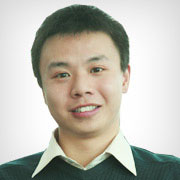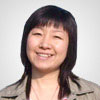┐╝įć░╔×ķĖ„╬╗ŠW(w©Żng)ėčš¹└Ē┴╦2013─Ļ12į┬ėóšZ╦─╝ē(j©¬)Ė─Ė’ą┬Ņ}ą═─ŻöMŅ}Ż¼ŽŻ═¹─▄Ä═ų·┤¾╝ęĖ³║├Ąžéõ┐╝ėóšZ╦─╝ē(j©¬)�ĪŻ
ĪĪĪĪPart ó¾ Reading Comprehension (40 minutes)(įŁ┐ņ╦┘ķåūx└ĒĮŌš{(di©żo)š¹×ķķL(zh©Żng)Ų¬ķåūx└ĒĮŌŻ¼Ų¬š┬ķL(zh©Żng)Č╚║═ļyČ╚▓╗ūā���ĪŻŲ¬š┬║¾ĖĮėą10éĆ(g©©)Šõūė��Ż¼├┐Šõę╗Ņ}��ĪŻ├┐Šõ╦∙║¼Ą─ą┼Žó│÷ūįŲ¬š┬Ą──│ę╗Č╬┬õ��Ż¼ę¬Ū¾┐╝╔·šę│÷┼c├┐Šõ╦∙║¼ą┼ŽóŽÓŲź┼õĄ─Č╬┬õ���ĪŻėąĄ─Č╬┬õ┐╔─▄ī”(du©¼)æ¬(y©®ng)ā╔Ņ}Ż¼ėąĄ─Č╬┬õ┐╔─▄▓╗ī”(du©¼)æ¬(y©®ng)╚╬║╬ę╗Ņ}��ĪŻ)
ĪĪĪĪSection B
ĪĪĪĪDirections: In this section, you are going to read a passage with ten statements attached to it. Each statement contains information given in one of the paragraphs. Identify the paragraph from which the information is derived.
ĪĪĪĪYou may choose a paragraph more than once. Each paragraph is marked with a letter. Answer the questions by marking the corresponding letter on Answer Sheet 2.
ĪĪĪĪUniversities Branch Out
ĪĪĪĪ[A] As never before in their long history, universities have become instruments of national competition as well as instruments of peace. They are the place of the scientific discoveries that move economies forward, and the primary means of educating the talent required to obtain and maintain competitive advantage. But at the same time, the opening of national borders to the flow of goods, services, information and especially people has made universities a powerful force for global integration, mutual understanding and geopolitical stability.
ĪĪĪĪ[B] In response to the same forces that have driven the world economy, universities have become more self¬consciously global: seeking students from around the world who represent the entire range of cultures and values, sending their own students abroad to prepare them for global careers, offering courses of study that address the challenges of an interconnected world and collaborative (║Žū„Ą─)research programs to advance science for the benefit of all humanity.
ĪĪĪĪ[C] Of the forces shaping higher education none is more sweeping than the movement across borders. Over the past three decades the number of students leaving home each year to study abroad has grown at an annual rate of 3.9 percent, from 800,000 in 1975 to 2.5 million in 2004. Most travel from one developed nation to another, but the flow from developing to developed countries is growing rapidly. The reverse flow, from developed to developing countries, is on the rise, too. Today foreign students earn 30 percent of the doctoral degrees awarded in the United States and 38 percent of those in the United Kingdom. And the number crossing borders for undergraduate study is growing as well, to 8 percent of the undergraduates at AmericaĪ»s best institutions and 10 percent of all undergraduates in the U.K. In the United States, 20 percent of the newly hired professors in science and engineering are foreign-born, and in China many newly hired faculty members at the top research universities received their graduate education abroad.
ĪĪĪĪ[D ] Universities are also encouraging students to spend some of their undergraduate years in another country. In Europe, more than 140,000 students participate in the Erasmus program each year, taking courses for credit in one of 2,200 participating institutions across the continent. And in the United States, institutions are helping place students in summer internships (īŹ(sh©¬)┴Ģ(x©¬))abroad to prepare them for global careers. Yale and Harvard have led the way, offering every undergraduate at least one international study or internship opportunityĪ¬and providing the financial resources to make it possible.
ĪĪĪĪ[E] Globalization is also reshaping the way research is done. One new trend involves sourcing portions of a research program to another country. Yale professor and Howard Hughes Medical Institute investigator Tian Xu directs aĪĪmy 14research center focused on the genetics of human disease at ShanghaiĪ»s Fudan University, in collaboration with faculty colleagues from both schools. The Shanghai center has 95 employees and graduate students working in a 4,300-square-meter laboratory facility. Yale faculty, postdoctors and graduate students visit regularly and attend videoconference seminars with scientists from both campuses. The arrangement benefits both countries; XuĪ»s Yale lab is more productive, thanks to the lower costs of conducting research in China, and Chinese graduate students, postdoctors and faculty get on-the-job training from a world-class scientist and his U.S. team.
ĪĪĪĪ[F ] As a result of its strength in science, the United States has consistently led the world in the commercialization of major new technologies, from the mainframe computer and integrated circuit of the 1960s to the Internet infrastructure (╗∙╩»│÷įO(sh©©)╩®)and applications software of the 1990s. The link between university-based science and industrial application is often indirect but sometimes highly visible: Silicon Valley was intentionally created by Stanford University, and Route 128 outside Boston has long housed companies spun off from MIT and Harvard. Around the world, governments have encouraged copying of this model, perhaps most successfully in Cambridge, England, where Microsoft and scores of other leading software and biotechnology companies have set up shop around the university.
ĪĪĪĪ[G] For all its success, the United States remains deeply hesitant about sustaining the research-university model. Most politicians recognize the link between investment in science and national economic strength, but support for research funding has been unsteady. The budget of the National Institutes of Health doubled between 1998 and 2003, but has risen more slowly than inflations since then. Support for the physical sciences and engineering barely kept pace with inflation during that same period. The attempt to make up lost ground is welcome, but the nation would be better served by steady, predictable increases in science funding at the rate of long-term GDP growth, which is on the order of inflation plus 3 percent per year.
ĪĪĪĪ[H ] American politicians have great difficulty recognizing that admitting more foreign students can greatly promote the national interest by increasing international understanding. Adjusted for inflation, public funding for international exchanges and foreign-language study is well below the levels of 40 years ago. In the wake of September 11, changes in the visa process caused a dramatic decline in the number of foreign students seeking admission to U.S. universities, and a corresponding surge in enrollments in Australia, Singapore and the U.K. Objections from American university and business leaders led to improvements in the process and a reversal of the decline, but the United States is still seen by many as unwelcoming to international students.
ĪĪĪĪ[I ] Most Americans recognize that universities contribute to the nationĪ»s well-being through their scientific research, but many fear that foreign students threaten American competitiveness by taking their knowledge and skills back home. They fail to grasp that welcoming foreign students to the United States has two important positive effects: first, the very best of them stay in the States andĪ¬like immigrants throughout historyĪ¬strengthen the nation; and second, foreign students who study in the United States become ambassadors for many of its most cherished (šõęĢ)values when they return home. Or at least they understand them better. In America as elsewhere, few instruments of foreign policy are as effective in promoting peace and stability as welcoming international university students.
ĪĪĪĪ46. American universities prepare their undergraduates for global careers by giving them chances for international study or internship.
ĪĪĪĪ47. Since the mid-1970s, the enrollment of overseas students has increased at an annual rate of 3.9 percent.
ĪĪĪĪ48. The enrollment of international students will have a positive impact on America rather than threaten its competitiveness.
ĪĪĪĪ49. The way research is carried out in universities has changed as a result of globalization.
ĪĪĪĪ50. Of the newly hired professors in science and engineering in the United States, twenty percent come from foreign countries.
ĪĪĪĪ51. The number of foreign students applying to U.S. universities decreased sharply after September 11 due to changes in the visa process.
ĪĪĪĪ52. The U.S. federal funding for research has been unsteady for years.
ĪĪĪĪ53. Around the world, governments encourage the model of linking university-based science and industrial application.
ĪĪĪĪ54. Present-day universities have become a powerful force for global integration.
ĪĪĪĪ55. When foreign students leave America, they will bring American values back to their home countries.
ŠÄ▌ŗ═Ų╦]Ż║
┤¾īW(xu©”)ėóšZ╦─╝ē(j©¬)┐╝įćĖ─Ė’ą┬śėŅ}╝░┤░Ė
┤¾īW(xu©”)ėóšZ┴∙╝ē(j©¬)┐╝įćĖ─Ė’ą┬śėŅ}╝░┤░Ė
2013 ─Ļ12į┬╦─┴∙╝ē(j©¬)┐╝įćĖ─Ė’╝░éõ┐╝ųĖī¦(d©Żo)ģR┐é













